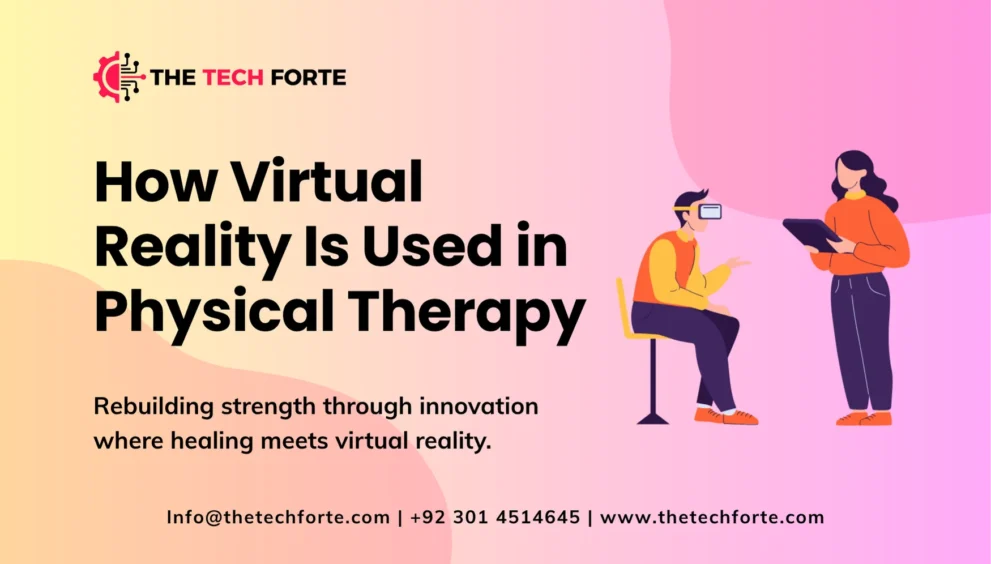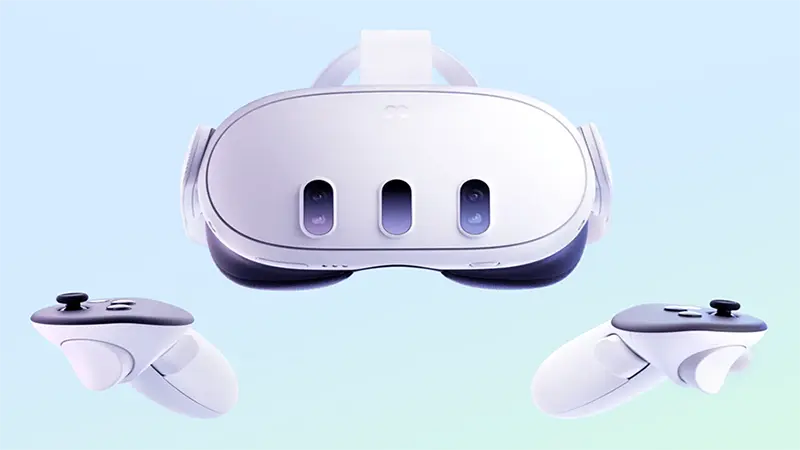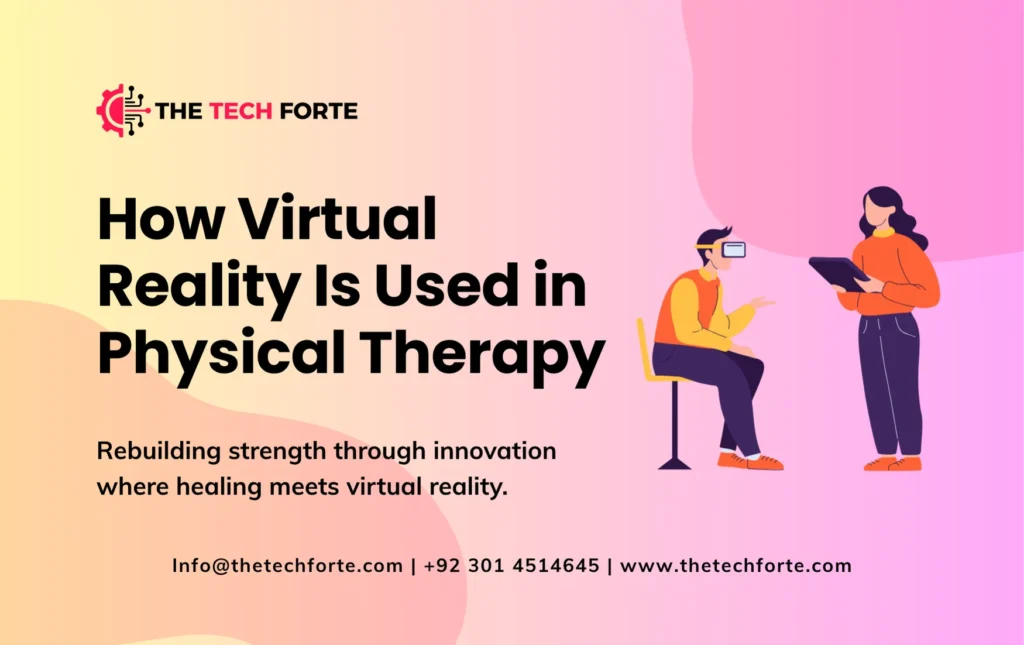How Virtual Reality Is Used in Physical Therapy

In recent years, virtual reality for physical therapy has evolved from a niche experiment to a mainstream tool in modern rehabilitation. As healthcare providers adapt to digital transformation, immersive VR platforms are reshaping how patients regain mobility, strength, and confidence. Data from Grand View Research (2025) projects the global virtual rehabilitation and therapy market to surpass $1.2 billion by 2028, underscoring the rising adoption of technology-driven treatment.
The fusion of VR systems and physical therapy offers both diagnostic and therapeutic advantages. By replicating real-life environments through virtual simulations, patients can perform controlled exercises in a safe, engaging space. These innovations have proven particularly effective in post-stroke recovery, orthopedic rehabilitation, and even senior therapy programs, where motivation and consistency are key.
Suggested Read: The Role of AI in Mental Health Therapy
The Science Behind Virtual Reality in Physical Therapy
At its core, virtual reality is used for physical therapy to engage multiple sensory pathways simultaneously. Patients wear a VR headset connected to motion sensors that track limb movements in real time. This interactive feedback helps improve muscle coordination and accelerates neuroplasticity—the brain’s ability to rewire itself after injury.
Unlike traditional physiotherapy, VR stimulates the visual, vestibular, and proprioceptive systems together. The immersive nature of the technology helps patients stay focused and reduces the perception of pain during exercises. According to Frontiers in Psychology (2024), patients using VR in rehabilitation reported up to 35% greater engagement compared to standard methods.
The Evolution of VR Systems for Physical Therapy
The early use of VR in therapy relied on static computer screens and external motion sensors. Today, virtual reality systems for physical therapy use lightweight, wireless headsets equipped with AI-driven motion capture and biofeedback technology. Devices like the Oculus, Meta Quest Pro, and HTC Vive Focus 3 enable therapists to design customizable exercise programs suited to each patient’s needs.
Furthermore, clinical-grade systems such as those developed by XRHealth and MindMotion PRO offer therapists data dashboards that analyze patient progress in real time. This combination of software analytics and immersive design has redefined how therapists measure outcomes. The integration of VR systems with EMR platforms also enhances data security and continuity of care, making digital therapy a reliable clinical tool.

How Virtual Reality Enhances Physical Rehabilitation
In a conventional rehabilitation setting, repetitive movements can feel monotonous. Virtual reality transforms these exercises into goal-oriented tasks, like catching virtual objects or balancing on digital surfaces. These engaging scenarios trigger dopamine release, enhancing motivation and adherence to therapy.
Research from The Journal of NeuroEngineering and Rehabilitation (2023) found that patients who used VR-assisted therapy for eight weeks achieved 25% faster recovery in motor skills compared to those using standard exercises alone. This demonstrates that VR-based physical therapy isn’t just a supplement; it’s an accelerator of functional recovery.
Key benefits include:
- Improved muscle memory through real-time feedback
- Enhanced patient motivation and reduced drop-out rates
- Greater precision in movement analysis and progress tracking
- Personalized therapy programs tailored to each individual
Virtual Reality for Senior Physical Therapy
A rapidly growing field is virtual reality for senior physical therapy, which focuses on mobility training, fall prevention, and cognitive stimulation for older adults. Traditional physiotherapy often struggles to maintain engagement among seniors due to limited variety and repetitive routines. VR, however, introduces enjoyable environments such as virtual gardens or gentle balance games that encourage consistent participation.
Studies conducted by the National Institute on Aging (2024) indicate that seniors using VR-based programs demonstrated 18% better balance scores and 30% higher exercise adherence. Beyond physical benefits, VR also helps combat social isolation by connecting patients with therapists and peers in virtual spaces. This combination of emotional and physical engagement positions VR as a holistic therapy tool for aging populations.
Virtual Reality Games in Physical Therapy
One of the most exciting applications is the development of virtual reality games for physical therapy. These gamified experiences blend rehabilitation with entertainment, keeping patients motivated throughout the recovery journey.
Some of the best virtual reality games for physical therapy in 2025 include:
- VRHealth Balance Trainer – Focuses on postural control and fall prevention.
- Beat Saber Rehab Edition – Uses rhythm-based arm movements to strengthen upper limbs.
- NeuroVR Recovery Games – Designed for stroke rehabilitation and fine motor control.
- Supernatural Fitness VR – Combines music, full-body movement, and guided coaching.
These games are integrated with motion tracking sensors, ensuring that every movement is clinically relevant. The gamification approach has been shown to increase therapy session duration by up to 40%, especially among younger and tech-savvy patients.
Role of Virtual Reality Apps in Modern Physical Therapy
With smartphones and tablets now part of daily healthcare routines, virtual reality apps for physical therapy have made at-home rehabilitation more accessible. Apps like XRHealth, Kaia Health, and RehabVR offer guided programs with feedback on movement accuracy, posture, and session completion.
For patients who live in remote areas or cannot attend in-person therapy sessions, these apps serve as a lifeline. Combined with telehealth platforms, they allow therapists to monitor progress remotely. This hybrid model supports continuity of care and reduces overall healthcare costs, aligning perfectly with the digital healthcare trends of 2025.
VR Software: The Backbone of Immersive Therapy
The true innovation in this field lies within virtual reality software for physical therapy, which bridges the gap between medical science and interactive technology. These platforms analyze biomechanical data to personalize treatment plans. They incorporate AI algorithms that detect irregularities in patient movements, suggesting real-time corrections during sessions.
Advanced VR software systems now support integration with wearable sensors that measure heart rate, muscle activation, and joint flexibility. This data-driven approach enhances clinical accuracy and enables outcome-based treatment. Furthermore, HIPAA-compliant VR software ensures that patient information remains secure, a critical factor as healthcare increasingly digitizes.
Diagnostic Use of Virtual Reality in Physical Therapy
Beyond treatment, VR serves as a diagnostic instrument. Virtual reality systems for physical therapy can detect early signs of motor impairment or gait instability before visible symptoms appear. By assessing body balance and reaction time within simulated environments, therapists can identify potential risks and adjust therapy plans proactively.
For example, a VR-based diagnostic test can measure how a patient shifts weight during virtual walking exercises. This information helps in detecting neuromuscular deficits, often missed by visual observation alone. Early intervention, guided by VR diagnostics, can prevent long-term mobility loss, particularly for patients recovering from neurological injuries.
Integration of Virtual Reality with Traditional Therapy
While VR offers revolutionary potential, it complements rather than replaces traditional therapy. The most effective rehabilitation programs combine manual therapy, strength training, and VR-based exercises to maximize patient outcomes.
Therapists often use VR sessions as warm-ups or cool-down activities to reinforce movement patterns learned during conventional exercises. By merging physical and virtual interventions, the therapy experience becomes both scientifically grounded and psychologically engaging.
Hybrid models are now being implemented across hospitals and clinics worldwide. For instance, Mayo Clinic’s 2025 Rehabilitation Program uses VR to reinforce neuromotor training, demonstrating that blended therapy models are the future of rehabilitation medicine.
Challenges and Limitations in VR-Driven Physical Therapy
Despite its advantages, the widespread adoption of VR therapy faces several challenges. High initial costs for VR systems, lack of clinician training, and varying patient adaptability can slow implementation. Furthermore, maintaining cybersecurity and data privacy remains a major concern, especially when cloud-based VR software stores sensitive medical data.
Physical constraints also exist; patients with severe vestibular disorders may experience dizziness, while others may struggle with headset discomfort. Addressing these issues through ergonomic hardware design and personalized software calibration will be critical to ensuring inclusivity and safety in the next wave of VR-based healthcare.
The Future of Virtual Reality in Rehabilitation
As VR continues to evolve, the future of physical therapy will likely revolve around real-time analytics, AI integration, and adaptive exercise environments. Experts predict that by 2030, virtual rehabilitation will become a standard component in most clinical settings.
Emerging technologies such as mixed reality (MR) and haptic feedback gloves are expanding possibilities for immersive therapy. These innovations allow patients to “feel” textures or resistance within virtual environments, further bridging the gap between virtual and physical worlds. The combination of AI-driven motion correction and personalized progress tracking promises a new era of outcome-based rehabilitation.
Global Adoption and Real-World Success Stories
Countries like the United States, Japan, and Germany are leading in VR therapy adoption. For instance, ClimbStation VR in Finland uses gamified climbing simulations to aid post-surgery recovery. Meanwhile, the U.S. Veterans Health Administration has implemented VR systems for veterans recovering from traumatic brain injuries.
These case studies illustrate that VR rehabilitation is no longer experimental; it’s becoming mainstream. Hospitals report improved patient satisfaction scores, faster recovery times, and reduced re-hospitalization rates, validating the long-term effectiveness of VR-based therapy programs.
FAQs
What is virtual reality in physical therapy?
Virtual reality in physical therapy refers to using immersive, computer-generated environments to help patients perform therapeutic exercises. By combining visual feedback, motion tracking, and interactive tasks, it supports faster and more engaging recovery.
How does VR help in rehabilitation?
VR provides a safe space to practice physical movements. Patients can perform repetitive tasks—like walking, stretching, or balancing—while receiving real-time feedback. This helps improve coordination, strength, and motivation during the rehabilitation process.
Is virtual reality effective for senior physical therapy?
Yes. Virtual reality for senior physical therapy has shown excellent results in improving balance, flexibility, and confidence among older adults. It also combats cognitive decline and loneliness through social interaction in virtual spaces.
Which are the best virtual reality apps for physical therapy?
Popular apps include XRHealth, Kaia Health, and RehabVR. These platforms offer guided programs, motion tracking, and progress monitoring, suitable for home-based recovery or remote consultations.
What is the future of VR in healthcare?
The future of virtual reality in physical therapy looks promising. With advancements in AI, wearable sensors, and 5G connectivity, VR will become even more personalized, precise, and accessible making it a key pillar of digital healthcare worldwide.
Conclusion: A Technological Revolution in Motion
The adoption of virtual reality for physical therapy signifies a turning point in modern healthcare. What began as a technological novelty has matured into a scientifically validated, patient-centered approach to rehabilitation. From virtual reality apps and software for physical therapy to senior-focused VR systems and interactive games, this ecosystem enhances both physical and emotional recovery.
In 2025 and beyond, virtual reality is used for physical therapy not merely as a supplement but as a core pillar of digital rehabilitation. As costs decrease and accessibility increases, VR-based therapy will continue to redefine what’s possible in physical recovery, bringing patients closer to a future where healing happens in both the real and virtual worlds.



















































































































































































































